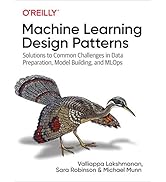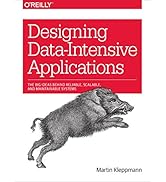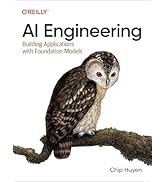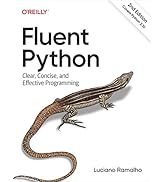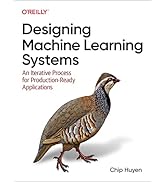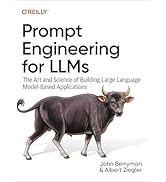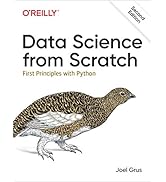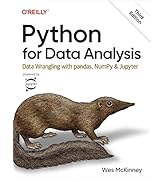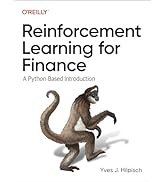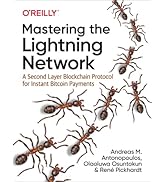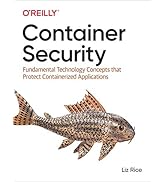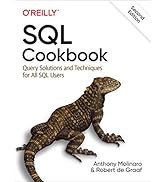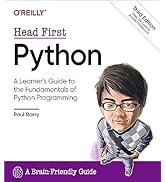Buy new:
-53% $18.62$18.62
FREE delivery Saturday, November 8 on orders shipped by Amazon over $35
Ships from: Amazon.com Sold by: Amazon.com
Save with Used - Good
$8.31$8.31
FREE delivery Sunday, November 9 on orders shipped by Amazon over $35
Ships from: Amazon Sold by: Jenson Books Inc

Download the free Kindle app and start reading Kindle books instantly on your smartphone, tablet, or computer - no Kindle device required.
Read instantly on your browser with Kindle for Web.
Using your mobile phone camera - scan the code below and download the Kindle app.

Building Wireless Sensor Networks: with ZigBee, XBee, Arduino, and Processing 1st Edition
Purchase options and add-ons
Get ready to create distributed sensor systems and intelligent interactive devices using the ZigBee wireless networking protocol and Series 2 XBee radios. By the time you're halfway through this fast-paced, hands-on guide, you'll have built a series of useful projects, including a complete ZigBee wireless network that delivers remotely sensed data.
Radio networking is creating revolutions in volcano monitoring, performance art, clean energy, and consumer electronics. As you follow the examples in each chapter, you'll learn how to tackle inspiring projects of your own. This practical guide is ideal for inventors, hackers, crafters, students, hobbyists, and scientists.
- Investigate an assortment of practical and intriguing project ideas
- Prep your ZigBee toolbox with an extensive shopping list of parts and programs
- Create a simple, working ZigBee network with XBee radios in less than two hours -- for under $100
- Use the Arduino open source electronics prototyping platform to build a series of increasingly complex projects
- Get familiar with XBee's API mode for creating sensor networks
- Build fully scalable sensing and actuation systems with inexpensive components
- Learn about power management, source routing, and other XBee technical nuances
- Make gateways that connect with neighboring networks, including the Internet
- ISBN-100596807732
- ISBN-13978-0596807733
- Edition1st
- PublisherO'Reilly Media
- Publication dateFebruary 1, 2011
- LanguageEnglish
- Dimensions7 x 0.9 x 9.19 inches
- Print length318 pages
Frequently bought together

Customers who viewed this item also viewed
 Arduino Cookbook: Recipes to Begin, Expand, and Enhance Your ProjectsPaperbackFREE Shipping on orders over $35 shipped by AmazonGet it as soon as Saturday, Nov 8
Arduino Cookbook: Recipes to Begin, Expand, and Enhance Your ProjectsPaperbackFREE Shipping on orders over $35 shipped by AmazonGet it as soon as Saturday, Nov 8
Customers also bought or read
- Building Wireless Sensor Networks Using Arduino (Community Experience Distilled)
 Paperback$39.52$39.52FREE delivery Saturday
Paperback$39.52$39.52FREE delivery Saturday - Beginning Sensor Networks with XBee, Raspberry Pi, and Arduino: Sensing the World with Python and MicroPython
 Paperback$52.79$52.79FREE delivery Saturday
Paperback$52.79$52.79FREE delivery Saturday - Get started with MicroPython on Raspberry Pi Pico: The Official Raspberry Pi Pico Guide
 Paperback$17.33$17.33Delivery Saturday
Paperback$17.33$17.33Delivery Saturday - Make: Electronics: Learning by Discovery: A hands-on primer for the new electronics enthusiast#1 Best SellerRobotics
 Paperback$19.29$19.29Delivery Saturday
Paperback$19.29$19.29Delivery Saturday - How Linux Works, 3rd Edition: What Every Superuser Should Know
 Paperback$27.23$27.23Delivery Fri, Nov 21
Paperback$27.23$27.23Delivery Fri, Nov 21 - Motors for Makers: A Guide to Steppers, Servos, and Other Electrical Machines
 Paperback$26.07$26.07$3.99 delivery Mon, Nov 17
Paperback$26.07$26.07$3.99 delivery Mon, Nov 17
From the brand

-

Sharing the knowledge of experts
O'Reilly's mission is to change the world by sharing the knowledge of innovators. For over 40 years, we've inspired companies and individuals to do new things (and do them better) by providing the skills and understanding that are necessary for success.
Our customers are hungry to build the innovations that propel the world forward. And we help them do just that.
-
Your partner in learning
-
Bestsellers
-
Software Development
-
Programming Languages
-
AI / Machine Learning
-
Data Science
-
Data, Databases and more
-
Cloud Services
-
Business
-
Finance
-
Blockchain / Cryptocurrency
-
Security
-
Cookbooks
-
Head First series
-
97 Things series
-
Lean series
Editorial Reviews
About the Author
Product details
- Publisher : O'Reilly Media
- Publication date : February 1, 2011
- Edition : 1st
- Language : English
- Print length : 318 pages
- ISBN-10 : 0596807732
- ISBN-13 : 978-0596807733
- Item Weight : 1.1 pounds
- Dimensions : 7 x 0.9 x 9.19 inches
- Best Sellers Rank: #602,189 in Books (See Top 100 in Books)
- #14 in Electronic Sensors
- #22 in Wireless Computer Networks
- #108 in Single Board Computers (Books)
- Customer Reviews:
About the author

Robert Faludi is an advisor and consultant for connected device companies. He was head of product for Perceptive Things, an IoT startup in the Smart Buildings space. For six years, he was the Chief Innovator at Digi International, working to forge strong connections with the maker community, uncover new innovation methodologies, support outstanding new work and create prototypes that spur new product development. Faludi has also been a professor in the MFA program at the School of Visual Arts in Manhattan and in the Interactive Telecommunications graduate program at NYU. He specializes in behavioral interactions through physical computing and networked objects. Rob is the author of Building Wireless Sensor Networks, with ZigBee, XBee, Arduino and Processing published by O’Reilly Media, 2011. He frequently consults on interactive projects including recent work in entertainment, architecture and toys. His work has appeared in The New York Times, Wired Magazine, Good Morning America, BBC World, the Chicago Museum of Science & Industry and MoMA among others. He is a co-creator of LilyPad XBee wearable radios, and Botanicalls, a system that allows thirsty plants to place phone calls for human help.
Customer reviews
Customer Reviews, including Product Star Ratings help customers to learn more about the product and decide whether it is the right product for them.
To calculate the overall star rating and percentage breakdown by star, we don’t use a simple average. Instead, our system considers things like how recent a review is and if the reviewer bought the item on Amazon. It also analyzed reviews to verify trustworthiness.
Learn more how customers reviews work on AmazonCustomers say
Customers find this book to be an excellent introduction to wireless sensor networks, particularly for hobbyists, with clear explanations and practical information. Moreover, the book is well-written and easy to follow, making it a great resource for these systems. Additionally, they appreciate the coverage of Arduino technologies, with one customer noting its impressive capabilities.
AI Generated from the text of customer reviews
Customers find the book provides a great introduction to wireless sensor networks, offering useful practical information and an excellent overview of the subject.
"Not quite what I thought it was, but it's a good resource." Read more
"Great book on the subject. Very helpful." Read more
"...serial communications or wireless radios then this book is a good introduction...." Read more
"Good basic information, but out of date concerning available hardware." Read more
Customers find the book highly readable, particularly noting its suitability for hobbyists and XBee beginners, with one customer specifically recommending it for series 2 XBee modules.
"Great book. Good explanations and good tutorials." Read more
"...software rather than remaining more generic but otherwise it's a worthwhile read." Read more
"Good reference book." Read more
"This is a fantastic book...." Read more
Customers find the book easy to follow.
"Very nice job. Goes into considerable depth by way of a few easy to follow examples. Highly recommended for persons interested in zigbee projects." Read more
"...and troubleshooting of the radios but is otherwise clear and easy to understand...." Read more
"Excellent guide to ZigBee. Easy to follow and use ZigBee information." Read more
"...is a good opportunity to practice and understand how they work and a simple and easy way." Read more
Customers appreciate the book's coverage of wireless technology, particularly its focus on sensor networks, with one customer highlighting its insights into Zigbee networks.
"Building Wireless Sensor Networks: with ZigBee, XBee, Arduino, and Processing is a great beginners hand book. I would recommend it to any beginner." Read more
"...I bought this book because I am designing and building a data acquisition system that will be spread out over vineyards and orchards for monitoring..." Read more
"Great resource for wireless sensors! This came in very handy for me while working on a project using ZigBee modules." Read more
"Gives some insight into Zigbee networks. The first chapters were the best. I read the book on Kindle...." Read more
Customers appreciate the writing style of the book.
"This is a fantastic book. It is so clearly written that I couldn't believe that I'd spent so much of my time and money trying to understand XBees..." Read more
"...Well written, plenty of detail to get to up and running and complete parts lists for projects and additional references." Read more
"Got topic but not as well written as most technical books...." Read more
"...This, however, is done with a great writting style and not all irritating to more advanced users..." Read more
Customers appreciate the book's coverage of Arduino technology, with one customer particularly impressed with its capabilities and advanced features.
"...found this book to provide a good balance between intro and more advanced features." Read more
"...The book walks you through the Zigbee and Arduino technologies very well and then blends them into simple projects to get you rolling...." Read more
"...never worked with the XBee radios before, and was really impressed with their capabilities. It was a great introduction for me...." Read more
Top reviews from the United States
There was a problem filtering reviews. Please reload the page.
- Reviewed in the United States on August 7, 2013Format: PaperbackVerified PurchaseThis is a great book, To be honest I did a lot of research on series two Xbee's and arduino before I purchased this book. Everything I found during my research was in this book. So..... for the most part I wouldn't have needed the book. But it is nice to have all the information in one neatly formated book. I actually got this book from the public library first and did like it. So I then went ahead and purchased it.
I was happy with the examples and with a little imagination I was able to rework the examples to meet my needs for my particular application. I do wish the book went into more depth in regards to mesh networks and trouble shooting, but for someone that wants to two or more xbees talking, this book will really help you out!
In my particular application I started out with three S2B radios, but after finding they weren't going to have the range I needed I switched to 900mhz radios and I was still able to use the information in this book. The 900HP radios have a little bit different set up in X-CTU, but after figuring that out. everything went smooth.
If there was a second book that went further that would be excellent! But I do want to say this " Digi's tech support is excellent!!! They were very helpful and supper fast in their responce to my questions. I could email them two, three times a day and they replyed to my emails every time befor the end of the day. I was supper stoked with there costomer service."
I would recomend this book, Just be sure your working with series 2 radios, if your looking at this book.
- Reviewed in the United States on June 7, 2015Format: KindleVerified PurchaseIf you've never dealt with pull-up resistors, serial communications or wireless radios then this book is a good introduction. The material gets a little bit repetitive around the setup, configuration and troubleshooting of the radios but is otherwise clear and easy to understand.
Unfortunately the real power of XBee radios is only realized when using API mode, which the book mentions but does not cover to a useful level.
Consider this book as a good starting point for classrooms and hackerspaces where XBees will mainly be used for fun and education. If you're actually needing to build a wireless sensor network then this book comes up a bit short on depth and detail.
- Reviewed in the United States on March 13, 2011Format: PaperbackVerified PurchaseUnlike other books, this book is intended for a user of ZigBee radios, NOT ZigBee protocol stack developers. This book does exactly what it was written to do, it provides a basis for using ZigBee (series 2) radios with a microcontroller. The book covers basic AT command setup (modem like commands used for the simplest of ZigBee communications) as well as API (direct comuter ZigBee commands) usage.
It does not assume any advanced knowledge of ZigBee or wireless communications. As a matter of fact it presents some inforamtion in an over simplified manner. This, however, is done with a great writting style and not all irritating to more advanced users (that is, you can skim the text for what you need).
I would highly recommand this book to anyone just starting out with ZigBee radios. I would also note that this book does not cover the series 1 radios, which are not series 2 compatible, though the same principals apply.
- Reviewed in the United States on January 31, 2021Format: PaperbackVerified PurchaseI really enjoyed this book. I found it contained a decent amount of technical depth, and included references and links to obtain more information on topics. The examples started appropriately basic and and in the end demonstrated some advanced concepts. I would recommend this book for anyone interested in developing XBee or Zigbee applications. The book covers the XBee 2 series, but I had no trouble adapting the content to my XBee 3 (for the purposes on this book, they are virtually identical and the XBee 3 includes a built in Microcontroller that can be used instead of the separate one added in a few examples in this book).
- Reviewed in the United States on March 29, 2018Format: KindleVerified PurchaseI found the book to be very helpful and well organized. I was starting with knowing nothing.
However, the book was published several years ago and Zigbee and XCTU have moved on to newer versions. The current Zigbee modules are S2C versions and xctu is at version 6. Therefore, all the sections of the book dealing with Zigbee configuration and xctu use are pretty much useless. For these sections of the book i found current information on YouTube and the Zigbee s2c datasheet to be helpful.
Still a useful introduction for me, but don't rely on it for current configuration info.
- Reviewed in the United States on June 6, 2011Format: PaperbackVerified PurchaseThis is an excellent overview of a difficult subject. I'm pretty new to the Arduino and prior to reading this book had no experience with the XBee. The book gave me enough of a foundation to build a small sensor network for my property (8 wireless nodes controlled by Arduino FIOs); Mr Faludi gives a clear, concise overview of the technologies involved and, perhaps more importantly, the motivations behind selecting different technologies. My remote wireless nodes contain LiPo batteries and I expect to get two to three months between re-charges; this impressive lifetime is due mostly to the implementation of sleep mode, a difficult subject which is very clearly covered in the book.
One point of confusion that I still grasp with is the differentiation between series 1 and series 2 xbees. The book exclusively uses series 2 devices, while several of the more notable Arduino hobby sites (adafruit, etc) very vocally prefer the series 1 devices. To my way of thinking (perhaps influenced by the author's position), having sensors in a mesh network makes the most sense; I have yet to read a valid counter argument.
I would also recommend that if you are seriously considering implementing a solution with multiple XBees to go ahead and purchase a Digi XPort X2 - they are available via the Digi site (though their online store is terrible) as well as Sparkfun. Remote management of XBees (including remote firmware updates!) is a very, very nice feature, and the iDigi integration extends this capability to any location on the internet. Pretty sweet. If you're interested, I blog about most of my hobby exploits here: [...]
Top reviews from other countries
-
 JoseMaReviewed in Spain on May 17, 2013
JoseMaReviewed in Spain on May 17, 20135.0 out of 5 stars Imprescincible
Format: PaperbackVerified PurchaseImprescindible si te gusta trastear con XBee. Esta muy bien porque va de menos a mas, incidiendo sobre las cosas mas importantes y los errores mas comunes a la hora de hacer funcionar redes mesh-xbee.
 Dr. FernandoReviewed in Germany on September 13, 2013
Dr. FernandoReviewed in Germany on September 13, 20135.0 out of 5 stars Building Wireless Sensor Networks: With ZigBee, XBee, Arduino. By Robert Faludi
Format: PaperbackVerified PurchaseThe book is good in deed, the clarity of examples etc. except black and white pictures. The seller was prompt and genuine, friendly and easy to communicate and deal. Very Happy.
-
 CammeoReviewed in Italy on March 18, 2017
CammeoReviewed in Italy on March 18, 20175.0 out of 5 stars Costruire reti senza fili di sensori
Format: KindleVerified PurchaseIl testo è chiaro, ricco di informazioni anche per i neofiti.
Il contenuto è generoso e non trascura alcunché.
Se vuoi puoi imparare davvero.
Dalla lista della spesa al circuito completo, naturalmente si basa sul mercato di fornitori anglosassoni.
Consigliato a che comincia e non sa niente dell'argomento.
 Martyn DaviesReviewed in the United Kingdom on March 15, 2011
Martyn DaviesReviewed in the United Kingdom on March 15, 20115.0 out of 5 stars Easy-to-read practical introduction to using ZigBee
Format: PaperbackVerified PurchaseThis is an easy-to-read, hands-on approach to starting with ZigBee wireless. The book clips along at a fair pace and introduces the reader not only to ZigBee, but also Arduino, 'Processing', Pachube and even interfacing your sensors to the web and Twitter.
There is quite a strong emphasis on Digi products in particular (which are used to build the projects) but Faludi includes guidance on alternatives available in the market. The examples use the Digi XBee modules, and you get to see both the "AT" interface and the binary API, plus a whistle-stop tour of the ConnectPort routers and their online iDigi web interface.
The projects are simple, but cover sensor and remote control applications, and by the end of the book you should have some good ideas of your own for wireless interfacing. Full code is provided, and you do not have to be an electronics expert to wire the projects together.
This is a great book and I would recommend it highly.
-
 Sylvain LerouxReviewed in France on December 20, 2012
Sylvain LerouxReviewed in France on December 20, 20125.0 out of 5 stars Building Wireless Sensor Networks ... with Xbee
Format: PaperbackVerified PurchaseJe ne sais pas si le titre de ce livre est assez précis. En effet, tout au long des 270 pages de l'ouvrage, la seule solution sans fil mise en œuvre est celle des modules XBee fabriqués par Digi. On n'y montre pas de module d'autres marques basé sur la technologies ZigBee. Ni aucun autre exemple de technologie radio. Encore moins de liaison infrarouge. Au premier abord, on peut regretter une vision aussi étroite. Mais il faut avouer que les petits modules XBee sont sacrément capables et méritaient très certainement une telle attention. D'autant plus qu'il sont réellement populaires dans le "hackerspace". À moins qu'à l'inverse, leur succès ne tienne justement à ce livre?
En effet, une fois admis le postulat qu'il ne va parler que de XBee, ce livre est une merveille. Non seulement il explique clairement les principes et les particularités de la technologie ZigBee. Mais il se révèle aussi un excellent manuel pratique qui, s'appuyant sur quelques projets simples, décrit en détail l'ensemble des manipulations nécessaires pour les utiliser, de sorte que même un novice en électronique pourra arriver à suivre - et surtout refaire.
Ces projets, justement, permettent une exploration progressive des capacités des modules XBee. Seuls d'abord. Puis couplés à la plate-forme Arduino ensuite. Si les premiers exemples restent focalisés sur la mise en œuvre de liaisons point à point élémentaires, à partir du chapitre 5 (p111) l'auteur rentre vraiment dans le vif du sujet, en développant un vrai réseau de capteurs. Ensuite, le chapitre suivant traite d'un point essentiel pour des capteurs réellement sans fil: la mise en sommeil des modules leur permettant d'économiser l'énergie. Loin de ces considérations terre-à-terre, le chapitre 7 prend de l'altitude et nous ouvre des horizons en introduisant les possibilités de passerelles entre un réseau de modules XBee et un réseau informatique. Ce qui mène naturellement au huitième et dernier chapitre, d'une vingtaine de pages, qui traite en grande partie du partage et de la géolocalisation des données via une plate-formes Internet.
Alors, quel sentiment quand on referme cet ouvrage? Peut-être le regret que ce livre n'ait pas été plus long? C'est certain qu'après la dernière page, on a envie d'en savoir plus. Et surtout envie de faire - quand on a pu résister à la tentation de réaliser les exemples au fur et à mesure! Voilà sans doute lancé le meilleur compliment à faire à Building Wireless Sensor Networks: c'est un livre qui fait envie. Accessoirement, il se révèle un parfait compagnon pour l'excellent Programming Interactivity publié dans la même collection. À se procurer d'urgence l'un comme l'autre!

















